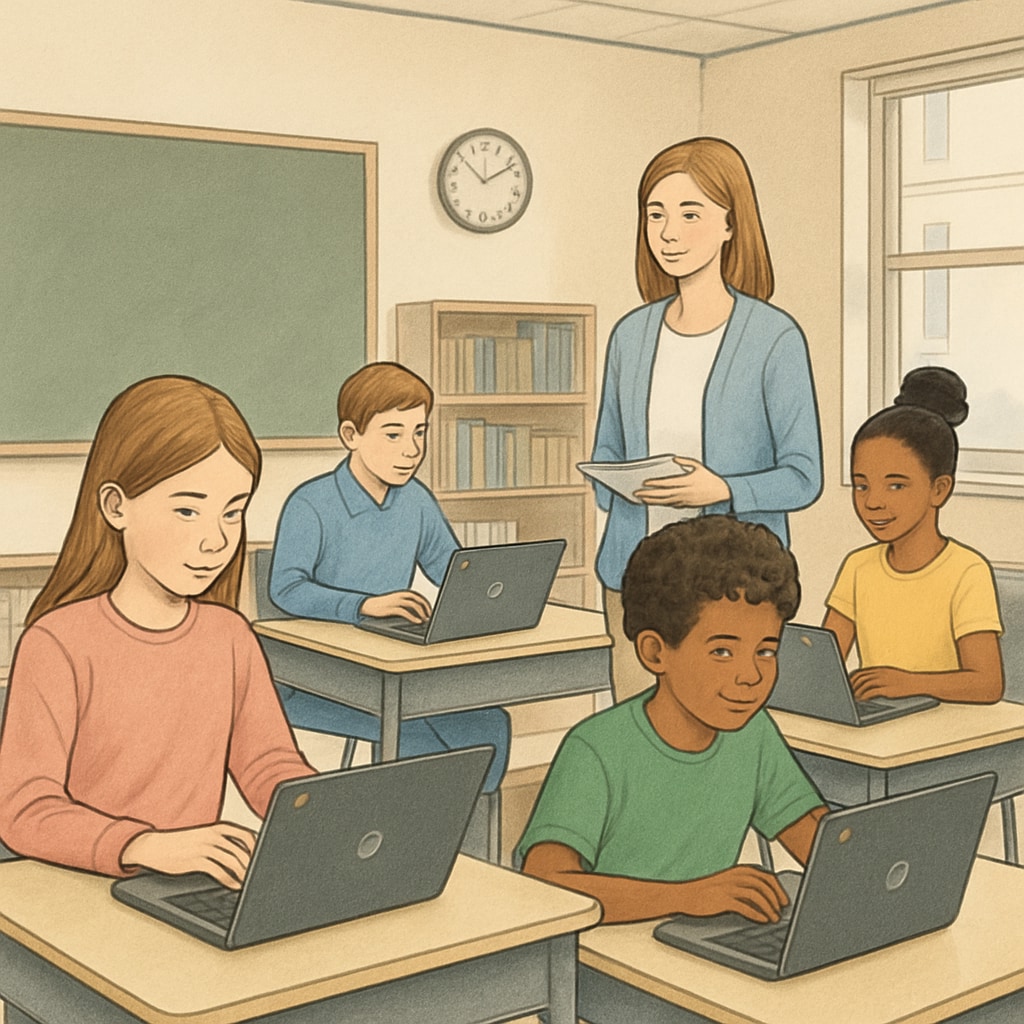The widespread adoption of education technology (EdTech) tools like Chromebooks has transformed K-12 classrooms across the globe. While these digital tools undoubtedly enhance teaching efficiency and streamline access to educational resources, they also raise an important question: is the growing reliance on EdTech stifling students’ critical thinking skills? This article explores the delicate balance between leveraging educational technology and fostering essential cognitive abilities in young learners.
EdTech: A Boon for Teaching Efficiency
The introduction of EdTech tools such as Chromebooks has significantly reduced the complexity of classroom management and resource allocation. Teachers can now quickly distribute assignments, monitor progress, and provide immediate feedback using platforms integrated into these devices. Moreover, students gain instant access to a wealth of knowledge that was once locked away in textbooks or libraries.
In addition to convenience, EdTech promotes personalized learning. Many platforms use adaptive algorithms to tailor content to individual student needs, thereby ensuring that each learner progresses at their own pace. This efficiency allows educators to dedicate more time to interactive lessons and individual mentoring.

The Cost of Efficiency: A Decline in Critical Thinking?
However, the emphasis on efficiency and automation has its drawbacks. Critical thinking—the ability to analyze, evaluate, and synthesize information—is a skill that cannot be developed through passive interaction with technology alone. Students often rely on pre-packaged answers and automated solutions, reducing the opportunity to engage in deeper problem-solving and independent thought.
For example, research has shown that overuse of guided digital tools can lead students to focus on “finding the right answer” rather than exploring the reasoning behind it. This issue is compounded by the tendency of some EdTech platforms to prioritize rote memorization over creative and analytical skills, which are essential for long-term success in the modern world.

Striking the Right Balance
To ensure that EdTech complements rather than hinders cognitive development, educators must adopt a balanced approach. Here are several strategies to achieve this:
- Incorporate Open-Ended Tasks: Encourage students to tackle assignments that require thoughtful analysis and creative solutions rather than straightforward, objective answers.
- Blend Technology with Traditional Methods: Combine digital tools with face-to-face discussions, debates, and collaborative projects to foster interpersonal and analytical skills.
- Emphasize Digital Literacy: Teach students to critically evaluate the information they encounter online, helping them differentiate between reliable and unreliable sources.
- Limit Over-Reliance on Automation: Use EdTech as a supplement rather than a replacement for traditional teaching methods.
By integrating these practices, educators can maximize the benefits of EdTech while preserving the critical thinking skills that students need to thrive in an increasingly complex world.
The Role of Policy and Professional Development
Finally, policymakers and school administrators must ensure that professional development programs equip teachers with the skills required to integrate technology effectively. This includes training educators to identify when and how to use EdTech tools to enhance—not replace—critical thinking exercises.
Additionally, schools should periodically evaluate the impact of technology on student outcomes. By collecting data on both academic performance and cognitive skills, educators can make informed decisions about the role of EdTech in the classroom.
Conclusion: While Chromebooks and other digital tools have revolutionized education, their role in the classroom must be carefully managed. By striking a balance between efficiency and cognitive development, we can ensure that the next generation of students is not only tech-savvy but also equipped with the critical thinking skills needed to navigate the challenges of the 21st century.
Readability guidance: Short paragraphs, bulleted lists, and transitional phrases ensure clarity. Active voice and concise language improve engagement, while consistent use of examples and strategies helps reinforce key points.


